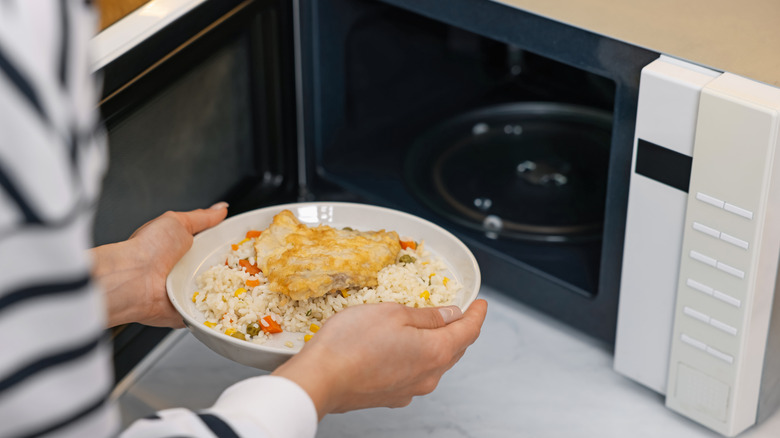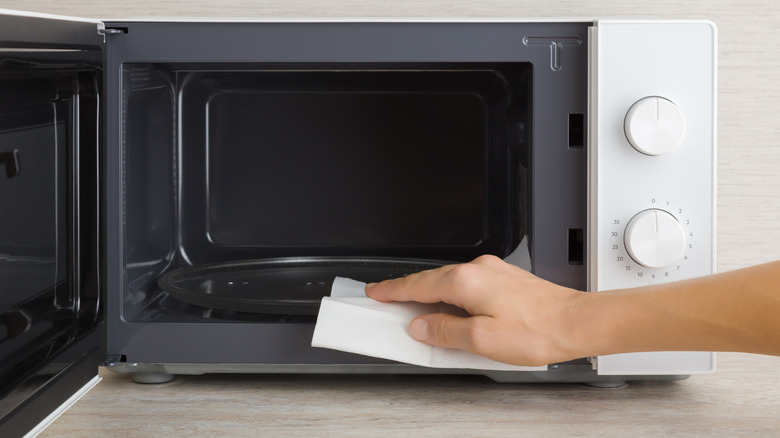The Common Mistake That's Making Your Microwave So Much Harder To Clean
It's inevitable: No matter how many times you remind your family to cover dishes before they heat them up in the microwave, someone forgets. Which is why you're greeted with dried pasta sauce welded to the entire interior of the microwave the next time you open it. Annoyed and frustrated, you reach for a sponge and some soap and start scrubbing. But scrubbing cold, dried food splatters off the inside of your microwave seems like a job more suited for a jackhammer than a sponge. It is also one mistake you're making in your microwave cleaning.
Even small splatters accumulate over time, and every time you use the microwave, they become more solidified and attached to the walls and turntable. Trying to clean cooked and hardened food off your microwave is making the job much more difficult than it needs to be. Instead, you should tap into the power of steam to rehydrate the spills and splatters, so they're much easier to wipe away. The steam adds moisture and heat back into the caked-on food particles, giving them a texture more similar to when the spill was fresh. Once it's clean, the easiest way to keep your microwave clean is already in your kitchen.
How to easily clean your microwave with steam
Fortunately, you don't need any expensive tools or obscure chemicals to clean your microwave. It's best to avoid harsh chemicals in your microwave since it's in such close proximity to your food. All you need is a microwave-safe bowl and some water. Put the bowl of water in the microwave and heat it on high for five minutes. Leave the bowl in the microwave for several minutes after the timer goes off to allow it to penetrate the stuck-on spills and cool off a bit. Carefully remove the bowl from the microwave and use a damp sponge or cleaning cloth to wipe out the inside. Remove your turntable, both for easier cleaning and so you can get any spills that may be underneath it.
Although the most important factor is the steam, you can add vinegar, lemon, or baking soda to the water for some extra cleaning power. If any stubborn spots remain, use some dish soap to clean them. However, don't use abrasive tools, such as stiff brushes or steel wool, since they may damage the surfaces of your microwave. This is also why metal utensils or sponges are common kitchen items you should never use to clean your microwave. While you're cleaning, check the filters as they are the overlooked parts of your microwave that you're likely forgetting to clean and maintain.

